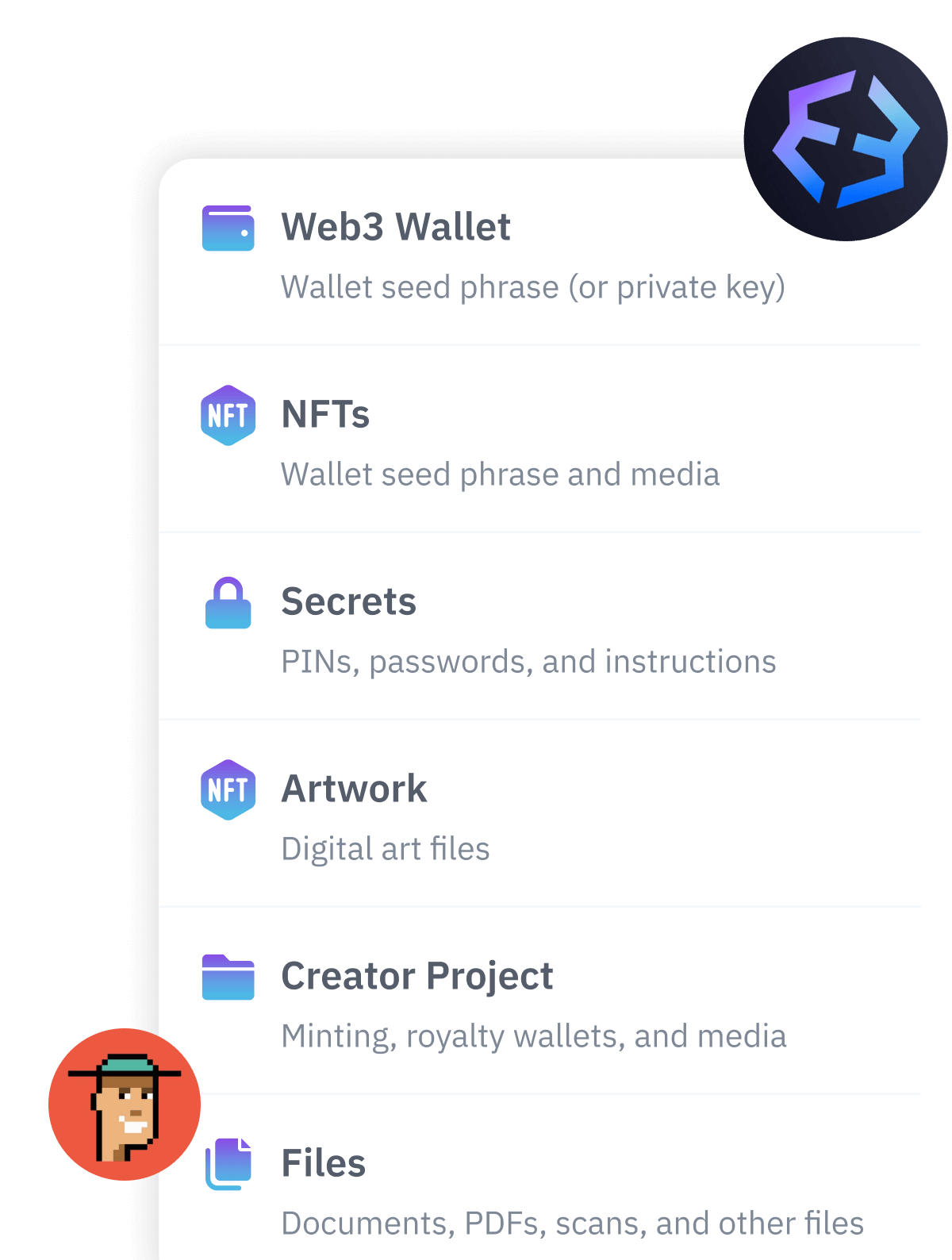
Contents
The Third Wave
We are approaching a "third wave" of cryptocurrency adoption that might be the beginning of a colossal paradigm shift that forever changes society and the relationships between money, government, and financial markets.
"In the meantime, we had a principally new idea, which we conditionally called the "third idea". In some form, as part of our wishful thinking, the "third idea" was discussed even earlier, but in 1954 these wishes became a real possibility."
- Andrei Sakharov, father of the first thermonuclear megaton-range USSR hydrogen bomb (known as Teller–Ulam design in the United States), Nobel Peace Prize laureate 1975.
The magic of a "third version" is well known in the world of technology and has forever held a special place in the stages of product development. Examples like Windows 3.0 and the 3rd Gen iPod highlight the necessity of a third iteration to effectively fine-tune the design, implementation, and mass adoption.
Created in a zero-to-one struggle, the first version is inevitably scarce on resources, time, money, and people. The goal is to release an MVP as soon as possible, then turn around and tie up loose ends. It's just a miracle it gets shipped at all. Thus a second version has to deal with the mostly mundane task of fixing bugs, paying technical debts, and doing small incremental improvements. Yet bug fixes and minor enhancements are not enough to expand from the early adopters to a broader market so the product stays roughly where it was, but works much better.
It is in the third version where the team finally can synthesize everything they learned so far to achieve unprecedented heights of success in the next iteration. The third version has the ability to reach critical mass and beyond, propel a product to the top of its industry.
We are approaching a "third wave" of Bitcoin and cryptocurrency adoption. This might be the beginning of a colossal paradigm shift that could forever change society and our relationships between money, government, and financial markets.
The early history
In the beginning, there was only Bitcoin and the void. In 2009, other cryptocurrencies did not exist and Bitcoin's first users were more akin to nerds in basements and online forums where a couple of pizzas cost 10,000 BTC. The spirit of crypto-anarchism was strong, but the practical tools were still missing.

Bitcoin struggled with its product-market fit at first. It found a random early niche within the illegal marketplace of "Silk Road", creating a long-term stigma as being used primarily "by criminals and hackers." Yet, as the Bitcoin Core team kept steadily improving the software and the community grew, Bitcoin steered away from its infamy and instead toward a massively bigger domain of non-criminal use as a cornerstone of the fintech 2.0 technical stack.
The second big wave, starting around 2014–2016, was an antithesis to the early days tainted by criminals and rife with shady actors. Everything was changing. Fully centralized exchanges sprung up with full compliance to the ancient rulebooks of government regulation written for the banking industry, and myriads of KYC/AML forms were now required for the simplest transactions. It appeared to be a full reversal from the crypto-anarchists posts on #bitcoin-wizards just a few years earlier.

This newfound respectability for crypto led to massive growth. With its ugly past behind it, Bitcoin caught the eye of many legitimate businesses and experts, signaling to the Wall Street establishment that it would play an important role in the future. A few million non-technical users joined the fold, excited to explore this new technology.
Bitcoin had lost its rebel edge as being predominantly anti-authoritarian and exclusively used by people with anti-establishment ideology. Insiders would sarcastically lament: "It appears we have to centralize to decentralize." The main ideological conflicts of the early Bitcoin days were never resolved; they were simply swept below the surface and left smoldering.
One can not "disrupt & replace" Wall St. by becoming a loyal, paying Wall Street customer. For real disruption, one has to provide a service that is cheaper, faster, and better by orders of magnitude then Wall Street. Or even better: change the rules of the game entirely, as Google did in the newspaper industry. The Wall Street execs bashing Bitcoin as "fraud" and "rat poison" in the press were merely being fully honest with us — showing us what their world looked from the top of their gilded towers.
If crypto newborns are forced to play by every established ancient rule and regulation, then it's the firms with the best r͟e͟g͟u͟l͟a͟t͟o͟r͟y c͟a͟p͟t͟u͟r͟e that are going to win by fiat [sic]. This battle would be over before it begins.
The crypto industry had gained legitimacy and attracted millions of new customers just when it needed them. Unfortunately, it came at the cost of moving further away from the foundational roots of the crypto movement. Bitcoin and the coming flock of cryptocurrencies were playing by the rules of the establishment, gaining supporters and credibility, but at the cost of not being able to deliver the original vision of radical, paradigm-changing advantages of crypto-finance to a much broader market. This conflict kept things in a tenuous balance that let the crypto space develop incrementally, but preventing it from reaching the massive scale as dreamed of by the early believers of the first wave.
Yet randomly, as black swans tend to fly, the combination of stablecoins, DeFi, COVID, and 24/7 "work from home" (WFH) policies may have been the perfect storm to blow the roof off it all and usher in an entirely new epoch. We are about to see a giant 'third wave" of crypto adoption.
A Very Stable DeFi Genius
The magic of technology is that it is exponential by its nature: the scale of payoffs and progression is not linear. That is the case of two recent inventions: stablecoins and Decentralized Finance (DeFi) scripts.

When stablecoins first arrived, they seemed boring and hardly anyone saw them as a significant innovation. Representing a 1:1 correspondence to chosen fiat currency, stable coins looked like an odd duck in the crypto family: centralized by a few companies (if the company issuing them goes under, so does the coin), full single-party risk, and they suffer from the same inflationary pressures as the linked fiat currency. Yet they have a couple of important properties: they are natively plugged into the pool of instant global liquidity of crypto markets, and are thus shielded from wild volatility. They became a helpful tool in the crypto toolshed and were initially used as a convenient way for traders to convert their volatile cryptocurrencies into a price-stable equivalent. Instead of going through a myriad of forms and regulations required when a trader sells their position into a "real" dollars, now that trader can just crypto-convert their position (staying fully native inside the crypto world) into a stablecoin and go to sleep knowing it has a very high probability to be worth exactly the same amount in the morning. Their assets stay fully in the crypto world but remain stable in value.

DeFi smart contracts, on the other hand, are much closer to the heart of cutting-edge crypto-tech and take full advantage of it. The simplest DeFi contract sets an exchange rules on the blockchain, for example: "Pick any two assets, A and B. I don't care what they are and how much they cost. I will just always maintain the volume AxB will stay constant at some value C no matter how much A or B people are buying and selling." You can read more details here. By itself, an 'AxB=C' pricing contract is very simple and takes fewer than 200 lines of code. There are various DeFi contracts with all sorts of sophistication. Practically, DeFi contracts allow creating a price between any pair of things — and the magic is that price changes live right on the blockchain, without the need of any organization to be the "owner" of maintaining that price. Pricing markets just became "ownerless" once a contract is deployed to the blockchain.
Yet these two relatively simple inventions, when used together, start a domino cascade that makes far more ambitious things possible.
First, it makes the creation of decentralized exchanges for any asset represented by a crypto token a trivial matter. If one part of a DeFi pair is a StableDollar or StableYuan, for example, an important property emerges — you can determine the current fair market price and therefore trade any crypto asset without a centralized exchange. The biggest "deal with the devil" the crypto community grudgingly made in the early years — that we must fully delegate our trust and our funds to single-point of failure legacy corporations (aka — exchanges) just to have the privilege to transact on the "decentralized" blockchain — now just disappears in a puff of smoke.
Second, all the regulatory baggage that held back crypto adoption now has one easy and trivial compliance gate: the stablecoin on/off-ramp. All the magic of elliptic curve signatures and hash functions, all the coin creation, exchanges, and burns, all the subtle dance of smart contracts intermixing data and monetary value can happen in the magical black box of cryptographic math.
Only when a participant needs to convert their crypto assets to "real" dollars do all regulatory and compliance gates need to be followed. The best part here is each side gets exactly what they want: the governments and regulators can concentrate on their chartered domain, which is "real" dollars (or yuan or, heavens forbid, ruble), while the crypto community concentrates on what is "real" for them — all the mathematical magic happening at microsecond speeds behind the curtain of crypto networks. Centralized exchanges, once undisputed kings of the hill can be relegated to a role not that much more differentiated than a corner store ATM — cash in and cash out stablecoins, while DeFi will eat pretty much everything else.
That pushes the next domino in the (block?) chain. Wall Street now has undisputed control of finance, and they are well protected from the crypto industry by massive regulatory capture — the chance of any new law passing that helps crypto innovation in the USA that would give it more equal footing with Wall St is equal to 0.0%. But now, suddenly, that protection is only blocking the future of a few "corner store ATMs," while the full force of crypto innovation can just flow around unrestrained. What happens then with Wall Street's control of the "commanding heights" of finance?
When the dam breaks, every young trader worth their salt will be building their own crypto firm instead of spending twenty years making a senior partner.
This is a huge step for the crypto industry — now it has full freedom to innovate again, and legacy centralized exchanges cashing out stablecoins are left with a gauntlet of regulation and political red tape.
Yet if the stablecoins were the starter block, DeFi was the kindling, and COVID is the kerosene, it's the upset population ("the people, of the people, by the people") that are about to light the match.
The Children of Covidcalypse
"That's what I love about technology. Who needs four horsemen when one'll do just fine?"
- Charlotte Hale, Westworld
The COVID crisis left a bewildered population with a constant dial tone: "who can we trust anymore?" They have lost faith in the institutions and systems they were once loyal to. Government, medicine, finance, and media have failed their responsibility to their citizens. It is apparent that we are entering an age of "infinite quantitative easing" around the world. Many governments were ill-prepared for the pandemic and made several blunders due to their horrendous lack of foresight. Poor decisions have left them in a desperate position, choosing to print unlimited amounts of fiat paper. The hunt for inflation-proof assets and the escape from cash is on.
As if there wasn't enough fuel to ignite this too-big-to-ignore conflagration, we now live in a world where people rarely leave their house, their income has been severely reduced, and they are lonely and bored. They now spend hours upon hours in front of a screen searching for new answers to how to protect their wealth from devaluation and how to get better returns on their life savings in the post-COVID world.
The planetary workforce is becoming increasingly WFH, with the smartest of employees realizing the best use of their extra time at home is better spent looking for additional revenue streams. The most successful people in a post-COVID world will be the ones who capitalize on the new vertical growth opportunities. As public trust wanes, it is a natural move for investors to migrate from all-stocks portfolios to include a bit (or even a lot) of crypto assets. Entrepreneurs and WFH employees are more aware of their chance to gain first-mover advantage in certain areas of the upcoming paradigm shift. We should expect to see tens of millions of more crypto owners enter the market in the coming months.
After all, when every government, organization, and public institution has already failed you, what else is there to trust but the fundamental mathematical truths of cryptography?

The Brave New World
As of Summer 2020, we see a strange new world that nobody could have predicted. Hundreds of millions of people are stuck at home and proactively hunting for any and all technical solutions to find financial growth and protection. Online day trading of financial instruments is at an all-time high and will keep growing. Savvy early adopters see the enormous upside potential of crypto. A full decade of unbroken technical excellence gave it public validity and unequivocally raised awareness to its noble original mission: to finally and forever separate personal citizen money and the state. The introduction of stablecoins and DeFi scripts paved the way for removing a dependency on centralized firms, reducing the monopolization of the financial elite, and transferring perhaps not the power itself (yet), but the option to hold the power to the masses for the first time in history.
Anyone can write a DeFi script in a thousand lines of code or less, effectively creating their own micro-Wall Street, and millions of micro-Wall Streets will be far more powerful than legacy Wall Street ever was. Wall Street will not be out-competed — it will just be made irrelevant. The advent of stablecoins makes going in and out of crypto as simple as using an ATM machine. The general utility of crypto finance now extends far beyond the hardened veterans of the "wild west" era.
The year 2020 might finally be the year the crypto industry is joined by millions of energized people all around the world. People seeking new answers that the governments no longer have an ability to provide will finally execute a '51% attack' on the archaic financial system and will revolutionize the global economy.
We are now living in the first weeks of the third wave. Thank you Satoshi, Bitcoin, and blockchain. Hello, brave new world.
Max Skibinsky is co-founder and CEO of Vault12, the first personal digital asset security platform.
PS: Our company enables you to create decentralized Vaults for ultra-secure distributed storage of your digital assets compatible with any blockchain, any wallet, and any asset. Sign up to receive updates here if you want to learn more!
The Third Wave
We are approaching a "third wave" of cryptocurrency adoption that might be the beginning of a colossal paradigm shift that forever changes society and the relationships between money, government, and financial markets.

Max Skibinsky
Max Skibinsky is a serial entrepreneur, angel investor, and startup mentor. Most recently, Max was an investment partner with Andreessen Horowitz, where he focused on enterprise security and bitcoin and deals with Tanium, TradeBlock, and Digital Ocean. In addition to co-founding Vault12, Max leads the R&D team. Before that Max was the founder and CEO of Hive7, a social entertainment company that became part of The Walt Disney Company. In 2003, Max joined the newly formed Voltage Security, an encryption startup incubated at Stanford University, where he architected and designed an Identity-Based Encryption messaging system that was showcased at DEMO '04. Voltage was acquired by Hewlett Packard in 2015. Max has also advised and invested in many startups graduating from Y Combinator including Eligible, Transcriptic, and ZenPayroll. Max graduated with a masters' degree in theoretical and mathematical physics from Moscow State University.

Vault12
Vault12 is the pioneer in crypto inheritance and backup. The company was founded in 2015 to provide a way to enable everyday crypto customers to add a legacy contact to their cry[to wallets. The Vault12 Guard solution is blockchain-independent, runs on any mobile device with biometric security, and is available in Apple and Google app stores.
You will lose your Bitcoin and other crypto when you die...
...unless you set up Crypto Inheritance today.
It's simple — if you don't worry about crypto inheritance, nobody else will — not your software or hardware wallet vendors, not your exchanges, and not your wealth managers. So it's up to you to think about how to protect the generational wealth you have created, and reduce the risks around passing that crypto wealth on to your family and heirs. What are the challenges with crypto inheritance?
- Crypto Wallets are difficult to use and do not offer crypto inheritance management. In fact, most of them tell you to write down your seed phrase on a piece of paper, which is practically useless.
- Some people back up their wallet seed phrases or private keys on paper, local devices like hardware wallets or USBs, or in the cloud. All of these options have severe drawbacks that range from hacking to accidental loss to disrupted cloud services.
- Software wallets operate on specific blockchains, yet your crypto assets span multiple blockchains. For inheritance to work, you must be able to manage inheritance across every blockchain — now and forever.
DISCLAIMER: Vault12 is NOT a financial institution, cryptocurrency exchange, wallet provider, or custodian. We do NOT hold, transfer, manage, or have access to any user funds, tokens, cryptocurrencies, or digital assets. Vault12 is exclusively a non-custodial information security and backup tool that helps users securely store their own wallet seed phrases and private keys. We provide no financial services, asset management, transaction capabilities, or investment advice. Users maintain complete control of their assets at all times.
Pioneering Crypto Inheritance: Secure Quantum-safe Storage and Backup
Vault12 is the pioneer in Crypto Inheritance, offering a simple yet powerful way to designate a legacy contact and pass on your crypto assets—like Bitcoin (BTC), Ethereum (ETH) and Solana (SOL) —to future generations. Built for everyday users yet robust enough for the most seasoned crypto enthusiasts, Vault12 Guard ensures your wallet seed phrases and private keys are preserved in a fully self-sovereign manner, across all Blockchains.
At the heart of Vault12 Guard is quantum-resistant cryptography and a decentralized, peer-to-peer network of trusted Guardians. Your critical information is never stored in the cloud, on Vault12 servers, or even on local devices—dramatically reducing the risk of a single point of failure. By fusing a powerful software layer with the Secure Element of iOS devices (Secure Enclave) and Google devices (Strongbox), Vault12 Guard locks down your private keys against present and future threats.
Our innovative approach harnesses social recovery, enabling you to appoint one or more trusted individuals or mobile devices as Guardians. These Guardians collectively safeguard your protected seed phrases in a decentralized digital Vault—so there’s no need for constant lawyer updates or bulky paperwork. Should the unexpected happen, your chosen legacy contact can seamlessly inherit your crypto assets without compromising your privacy or security.
Preserve your digital wealth for generations to come with Vault12 Guard—the simplest, most secure way to manage crypto inheritance and backup.
Take the first step and back up your crypto wallets.
Designed to be used alongside traditional hardware and software crypto wallets, Vault12 Guard helps cryptocurrency owners back up their wallet seed phrases and private keys (assets) without storing anything in the cloud, or in any single location. This increases protection and decreases the risk of loss.
The first step in crypto Inheritance Management is making sure you have an up-to-date backup.
The Vault12 Guard app enables secure decentralized backups, and provides inheritance for all your seed phrases and private keys across any blockchain, including Bitcoin, Ethereum, and others, and for any crypto wallet.
Note: For anyone unfamiliar with cryptocurrencies, Vault12 refers to wallet seed phrases and private keys as assets, crypto assets, and digital assets. The Vault12 Guard app includes a software wallet that works alongside your Digital Vault. The primary purpose of this is to guard your Bitcoin (BTC) and Ethereum (ETH) wallet seed phrases, private keys, and other essential data, now and for future generations.











